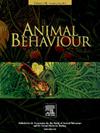Advancing animal behaviour research using drone technology
IF 2.3
2区 生物学
Q2 BEHAVIORAL SCIENCES
引用次数: 0
Abstract
Unmanned aerial vehicles or drones have revolutionized wildlife monitoring, and they are increasingly being used to study animal behaviour. In this review, examples of how data captured by drones (primarily images and video) enable the study of animal behaviour in less accessible environments, as well as rare or elusive behaviours, are provided. We believe that the potential application of drone imagery to advance wildlife monitoring creates unique opportunities for animal behaviour research and conservation. Rapid advances in image-tracking technologies and the use of artificial intelligence to identify the position, behaviour and local environment of many individuals simultaneously allow for the automated collection and processing of large data sets. Moreover, drones allow researchers not only to observe but also to manipulate and alter animal behaviour, creating a biohybrid system (i.e. a system involving an interaction between biological and engineered components, as discussed in this special issue), enabling the systematic study of specific behaviours, such as responses to simulated predation risk, or managing animal groups in agricultural settings and human–wildlife conflict scenarios. However, effective drone usage is a difficult task, requiring consideration of many aspects. We highlight the importance of user proficiency in drone piloting and the challenges of processing and analysing the vast amount of data they create. In addition, we provide some insights into the importance of carefully considering the study species and context for animal behaviour research. Various methods of dealing with landscape and interindividual heterogeneity in studies across different species are also suggested. Finally, some ethical considerations and potential unintended consequences of drone usage are discussed.
求助全文
约1分钟内获得全文
求助全文
来源期刊

Animal Behaviour
生物-动物学
CiteScore
4.60
自引率
8.00%
发文量
236
审稿时长
10.2 weeks
期刊介绍:
Growing interest in behavioural biology and the international reputation of Animal Behaviour prompted an expansion to monthly publication in 1989. Animal Behaviour continues to be the journal of choice for biologists, ethologists, psychologists, physiologists, and veterinarians with an interest in the subject.
 求助内容:
求助内容: 应助结果提醒方式:
应助结果提醒方式:


